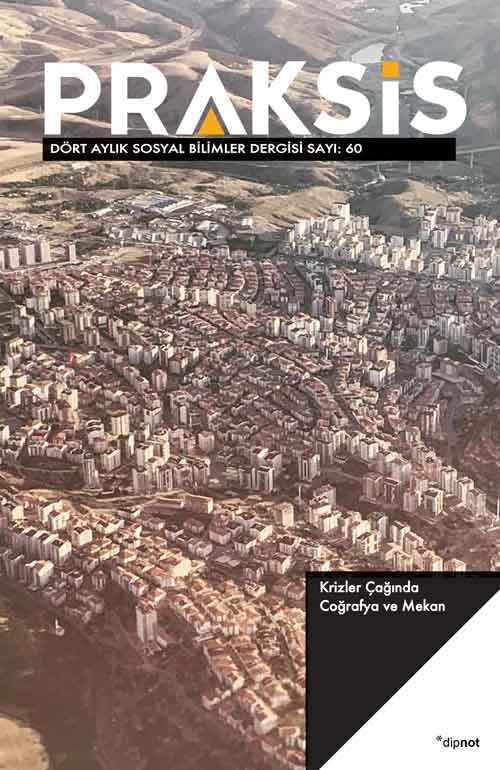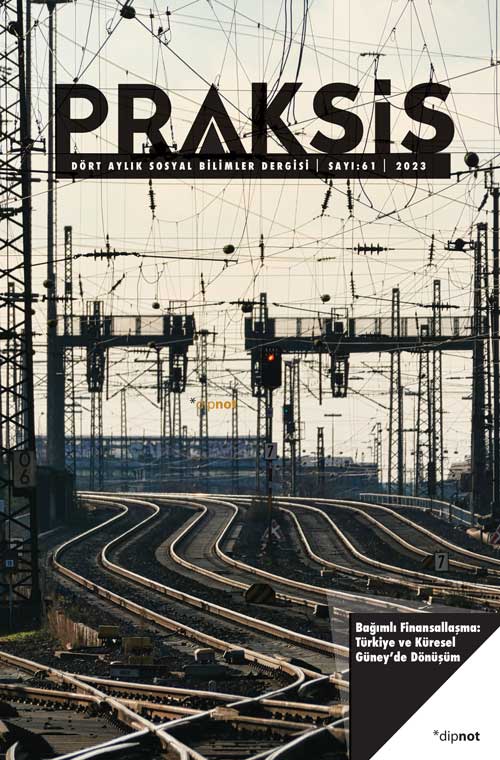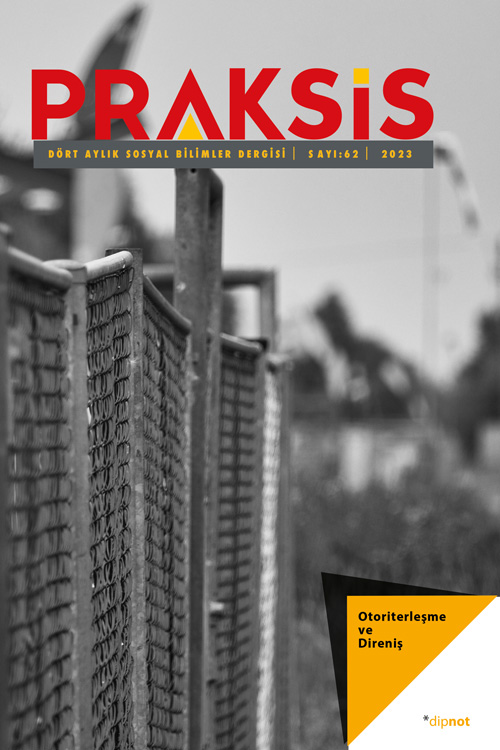An Essay on Spaces, Geography and Crises of Territoriality
Within the framework of theories of territory and territoriality, this article examines the relationship of the crises of capitalism with geography and space. First, it explores the concept of territory as it is articulated in the fields of geography, sociology, and philosophy. Later, it discusses the two main interpretations of the concept of territoriality. It presents the concepts, territory and territoriality, as two interrelated but unique historical developments to emphasize the plurality of theories. Finally, a set of examples of how crises of capitalism pervade, and become visible in, space and geography are discussed in various scales of urbanization beyond usual definitions of country or city. Examples suggests that territory and territoriality are at work on all scales and processes of urbanization. In this respect, the paper argues that understanding territories can offer many critical and analytical perspectives.
Keywords: Keywords: Territory, territoriality, space, geography, urbanisation
Authoritarian State Interventions in Urban Daily Life in the Shadow of the Pandemic
This study deals with the relationship between the authoritarianism tendency of the state and urban space through the restrictions, prohibitions and precautionary decisions taken on daily life activities and urban public spaces in the fight against the long-lasting coronavirus crisis. The main purpose of this study is to reveal whether the circulars and board resolutions adopted by the state as a means of intervening in urban space and daily life activities in the fight against the coronavirus crisis have turned into regulations that accelerate and normalize the authoritarianism trend in the case of Turkey. In the sense of an urban spatial hegemony analysis developed by the state apparatus as a superstructure, this article argues that city oriented regulations that normalize the state of exception in times of crisis have become the basic elements. that provide a legitimate basis for the necessity of the use of the state’s oppressive devices. In this context, the conflicts between state interventions and urban daily life are revealed by examining the examples of decisions taken on a provincial basis -the President and the Ministry of Internal Affairs circulars, the General Health Board and the Governor’s Office decisions- in order to combat the epidemic and ensure public order during the pandemic period. The main point that the study wants to draw attention to is that cities have become the target spaces of the new normal state order that the authoritarian statist understanding aims to build, which tries to increase its legitimacy by normalizing exceptional situations, rather than discussing the legality of restrictions, prohibitions and injunctions against urban daily life.
Keywords: Urban Everyday Life, urban public open space activities, state interventions, crisis of democracy, authoritarian statism
Walking in the City Beyond Crises
The pandemic, economic and policy-based crises that dominate today have emphasized the inevitability of change and the importance of mobility. Although the city implies geographical fixity, it is confined to change and transformation and depends on the displacement of the commodity and the living. This mobility, which the urban space depends on, hosts and witnesses, is decisive in the relationship people establish with their physical and social environment and spatial and temporal context. The primary form of mobility in question is walking. However, walking in today’s city is either a privilege or a risk. This study deals with the production of urban space through the concept of walkability and questions the walkability of today’s Turkish city on the axis of various power relations. Countless crises, from pandemics to explosions, from violent interventions in marches to harassment, are affected by or born out of power relations and are
linked in different ways to the inability to walk in the city. As the crises we have witnessed strikingly demonstrate, the fact that the city is not walkable corresponds to constraint, bondage, peril, insecurity, and intolerance, and thus to the destruction of the social production of the city. Yet the city changes and transforms. In this context, this study takes walkability as a focal point for critical reading of the city and its production. Although the reading presented draws a rather pessimistic picture, it finds hope in walking as a facilitator of positive change and transformation.
Keywords: City, walkability, walking, power relations, crises
The Modern Coasts of Istanbul: The Metabolic Flow of Land and Urban Renewal Waste Through Four Coastal Projects From The 19th to the 21st Century
As an important element in the construction of cities and economies as metabolized socio-natures, coastal cities have functioned as fragile ecological niches throughout the history of capitalism. İstanbul, one of these cities where water and land meet, is under socio-ecological pressure in today’s capitalist conditions. In the 2000s, the total surface area of the coastal land reclamations in İstanbul reached a size that could form a new district. Hazardous consequences such as soil erosion, sediments, altered hydrology, and land subsidence were materialized by coastal land reclamations that gave way to property ownership and dramatic interventions on the earth’s surface. This study explores how the metabolic journey of urban land and urban renewal waste have historically been spatialized in the form of coastal land reclamation areas for a period of time, in order to understand the modern coasts of Istanbul through four land reclamation projects. While the first two of the urban coastal land reclamation projects examined were the Yenikapı filling area and the associated harbor area proposal and the İstanbul Port project, which appeared in the 19th century; the other two are coastal land reclamation projects realized in Maltepe and Yenikapı in the 21st century. In this study, the story of how nature is spatialized through various circulations is explored. It is claimed that urban projects depend not only on the instruments of capitalism, which transform socioecological relations by making it fragile in the deepening unequal geography of Istanbul, but also on urban agendas and imaginations that are very closely related to architecture and all of us. In doing so, it hopes to contribute to a reconsideration of possible future imaginations and projections as well as current environmental and managerial interventions that are effective in the production of the coast by examining the metabolic journey of urban land and urban renewal waste from the perspective of urban metabolism.
Keywords: Port of İstanbul, coastal land reclamation, metabolic flows, Yenikapı, Maltepe
From “Stadyom” to Arena: Transformation of Stadiums in Turkey
Stadiums are more than buildings that host sporting events. They are places where national identities are produced and reproduced for political powers. They are places where power relations in national/international sports organizations, collective memory of the city and, in particular, that of football fans, exist. Both sports and products other than sports are offered to the capitalist market in stadiums. After the 1980s, the transformation in the stadiums is remarkable with the high security, technologically equipped, panopticon designs in which the audience is classified according to their class position. These “new generation”, “postmodern” or “gentrified” stadiums were also built in Turkey after the 2000s. In this study, the transformation of stadiums in form and content from the day they were built to the present day is evaluated with its economic, political, social, and cultural outlines and results.
Keywords: Turkey, stadium, nation state, sports geography, gentrification
Book Reviews:
“Kentlerin Türkiyesi”: Eski Şarap, Yeni Şişe
İbrahim Gündoğdu
Tamamlanmamış Kentsel Devrim: Günümüz Türkiye’sinde Kent, Kriz ve Gündelik Hayat
Havva Ezgi Doğru




